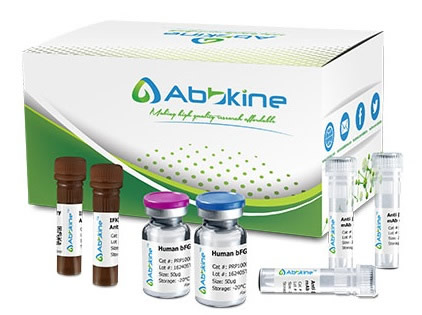QPCT encodes human pituitary glutaminyl cyclase, which is responsible for the presence of pyroglutamyl residues in many neuroendocrine peptides. The amino acid sequence of this enzyme is 86% identical to that of bovine glutaminyl cyclase.The deduced 361-amino acid protein has a calculated molecular mass of about 41 kD. It contains an N-terminal signal peptide region, several glycosylation and phosphorylation sites, and 2 cysteine residues conserved between the bovine and human enzymes. QPCT shares 86% overall sequence identity with the bovine homolog.Glutaminyl cyclase expression was upregulated in the cortices of individuals with Alzheimer disease and correlated with the appearance of pE-modified amyloid beta.
Bovine Glutaminyl-peptide cyclotransferase (QPCT) ELISA Kit employs a two-site sandwich ELISA to quantitate QPCT in samples. An antibody specific for QPCT has been pre-coated onto a microplate. Standards and samples are pipetted into the wells and anyQPCT present is bound by the immobilized antibody. After removing any unbound substances, a biotin-conjugated antibody specific for QPCT is added to the wells. After washing, Streptavidin conjugated Horseradish Peroxidase (HRP) is added to the wells. Following a wash to remove any unbound avidin-enzyme reagent, a substrate solution is added to the wells and color develops in proportion to the amount of QPCT bound in the initial step. The color development is stopped and the intensity of the color is measured.
Bovine Glutaminyl-peptide cyclotransferase (QPCT) ELISA Kit listed herein is for research use only and is not intended for use in human or clinical diagnosis. Suggested applications of our products are not recommendations to use our products in violation of any patent or as a license. We cannot be responsible for patent infringements or other violations that may occur with the use of this product.
bio-equip.cn




